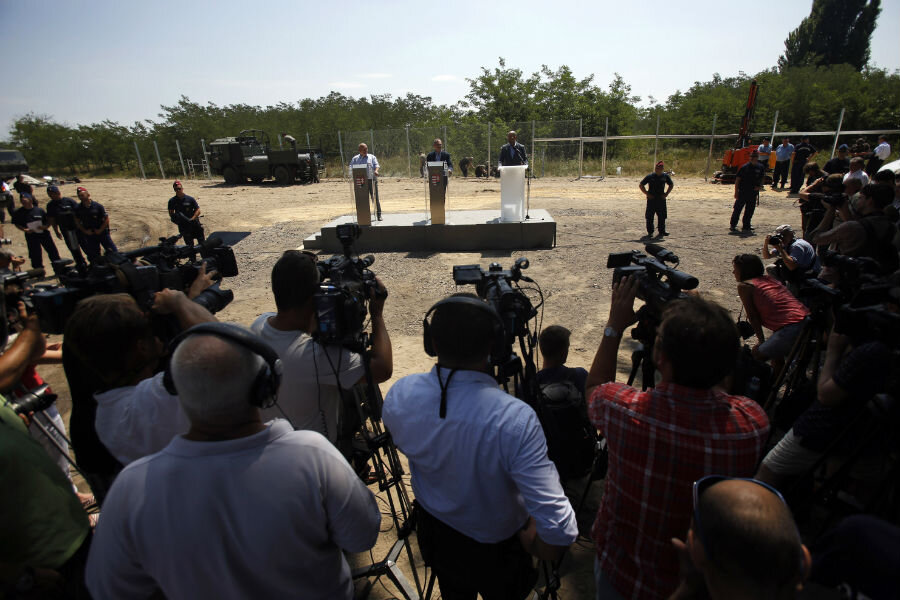Hungarian prisoners and soldiers to construct anti-migrant fence
Loading...
Hungary laid out plans to construct an anti-migration fence along its border with Serbia on Thursday.
Hungarian prison inmates will ready the materials needed, and 900 soldiers will construct the barrier by December, officials said — a project critics are comparing to Communist-era barriers like the Berlin Wall, The Associated Press reports.
Work on the 13-foot-high fence, meant to stop refugees from crossing on foot across the Balkans into the European Union member nation, will take place at 10 to 12 locations simultaneously along the 109-mile border, Defense Minister Csaba Hende said at a press conference near the southern town of Morahalom, where a sample section of the fence is being built to experiment with different building materials.
"The Hungarian defense force is ready to complete this task," he declared as soldiers wrestled with barbed wire and metal posts, according to the AP.
Hungary plans to dismantle its migrant housing and replace it with tent camps in rural areas to accommodate the large number of asylum-seekers, 80 percent of whom are coming from war-torn countries such as Syria, Iraq, and Afghanistan.
Janos Lazar, head of the prime minister's office, said on Thursday that Hungary will seek to make illegal border crossings a crime, as opposed to a minor offense.
"This is a clear message to human traffickers," Lazar said. "It will be much more difficult, expensive and risky to head toward Hungary."
Prior to Hungary’s current efforts, EU countries had already begun using walls as a means of keeping migrants from the Middle East and North Africa out. Border management is the prerogative of nations, and unregulated by the EU.
A wall between the Spanish city of Melilla and Morocco prevents refugees from crossing out of northern Africa into Spanish territory. For the past year and a half, Bulgaria has been strengthening its border with a wall and heightened security along its boundary to Turkey, in order to stem the tide of refugees, according to The New York Times.
After the Berlin Wall came down in 1989, construction of border walls worldwide basically halted. But after September 11, 2001, there was a sharp increase in walls being erected between nations, a symptom of tensions in the Middle East, and an implicit link between terrorism and migration that the United Nations refugee agency has since criticized. As of 2011, more than 45 walls separated countries and continents, according to data collected by Elisabeth Vallet, a scholar at the University of Quebec.
In 2006, in reaction to a spike in illegal immigration and drug-related crimes, the Bush administration routed funds to construct sections of a fence along the 1,969-mile border between the United States and Mexico. Shortly after a stretch between San Diego, Calif. and Yuma, AZ was completed with a combination of a real and 'virtual' fence made up of of surveillance cameras and border patrol in 2010, President Obama halted further construction efforts and reallocated the budget for research and technology upgrades.
Hungary’s Interior Minister Sandor Pinter said the fence is the only immediate solution Hungary could find to stop the flow of migrants – who are now coming into the EU by the thousand per day.
“We are absolutely and fiercely against their (Hungary's) decision to build a fence," Serbian Foreign Minister Ivica Dacic said at a joint press conference with Greek Foreign Minister Nikos Kotzias last month. "This is no longer an issue that concerns only Serbia and Hungary, or Greece. This is an issue that Europe must resolve."







